#proboscidea
Text

Phosphatherium escuillei was one of the very earliest known members of the proboscideans, a lineage today represented only by the three living species of elephants.
Living in what is now Morocco during the late Paleocene and early Eocene, around 56 million years ago, it would have been about the size of a cat, roughly 30cm at the shoulder (~1') and 60cm long (~2'). It had a fairly low flat head with a proportionally short snout, while the back end of its skull behind its eyes was elongated, supporting large powerful jaw muscles.
Wear patterns on its teeth suggest it ate a lot of tough vegetation, and it may have been a semiaquatic animal behaving somewhat like modern tapirs or pygmy hippos – spending a lot of the daytime lounging in water, and emerging onto land to forage during the night.
———
NixIllustration.com | Tumblr | Patreon
#science illustration#paleontology#paleoart#palaeoblr#phosphatherium#proboscidea#afrotheria#mammal#art#they are very shaped
323 notes
·
View notes
Text
Taxonomy Tournament: Mammals


Proboscidea. This order is made up of elephants.
Sirenia. This order is made up of sea cows, the dugong and manatee.
#animals#biology#polls#poll tournament#zoology#elephants#mammals#tetrapods#sea cows#dugongs#Proboscidea#Sirenia#0x4fv0xb0#animal tournament#Animal Tournament Round 1
103 notes
·
View notes
Text

Asian elephants (Elephas maximus) in Kaziranga National Park, India
by praveen pandian
#asian elephant#elephants#Elephas maximus#elephas#elephantidae#proboscidea#mammalia#chordata#wildlife: india#wildlife: asia
97 notes
·
View notes
Text
"Grandest of Elephants"
2021

Asian Straight-tusked Elephant (Palaeoloxodon namadicus)
#palaeoloxodon namadicus#elephants#proboscidea#paleontology#paleoart#animals#animal art#wildlife#wildlife art#photoshop#art#artists on tumblr#mexican artist#autistic artist#dartxo
38 notes
·
View notes
Photo



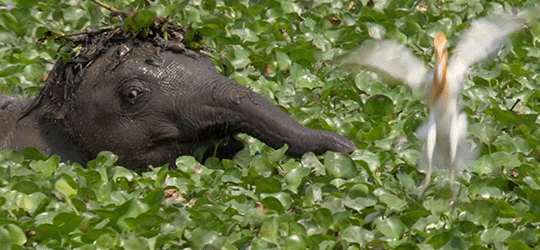


“In the heat of the day the elephants wallow amongst the floating water hyacinth. It’s a delicacy, but first it has to be washed.”
BBC Earth
#elephant#india#mammalia#proboscidea#herbivore#water hyacinth#pontederia crassipes#special guest star: coupla birbs lol
841 notes
·
View notes
Note
idk if u do extinct animals but I humbely request a wooly mammoth moodboard
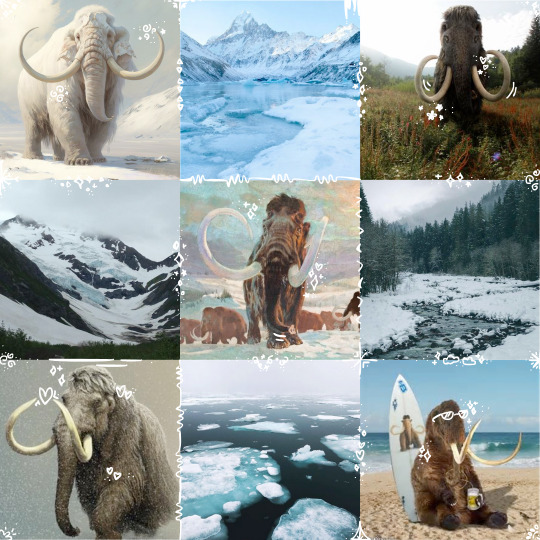
Wooly mammoth moodboard just for you devy wevy <3 <3. I threw a silly little guy in there for good measure. I was looking for pictures and though Why cant i find any real pictures of these dudes?? And then I remembered they're all dead. RIP wooly mammoth. Im not in a fact finding mood at the moment so you'll have to do without today, and just enjoy the moodboard.
#therian#therianthropy#alterhuman#otherkin#therian things#moodboard#mammoth#wooly mammoth#mammoth kin#mammoth therian#mammothkin#elephant#elephant therian#elephant kin#elephantkin#proboscideans#proboscidea
38 notes
·
View notes
Text

Color Pencil-and-ink impression of the strange Neogene proboscidean Deinotherium giganteum
#deinotherium#paleoart#paleontology#paleoillustration#mammal paleontology#paleontography#cenozoology#cenozoic life#cenozoic#proboscideans#proboscidea
42 notes
·
View notes
Text
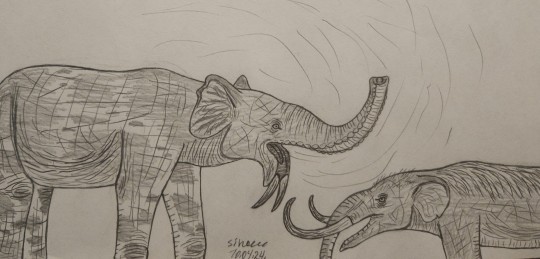
Aggressive deinotherium scares off a choerolophodon which entered his territory.
11 notes
·
View notes
Text

Paleovember 2022, Platybelodon.
Boy, the Miocene has given us just a TON of weird animals, hasn't it? Widespread throughout Africa and Asia, Platybelodon was once thought to use the shovel-like teeth on it's bottom jaw to scoop up aquatic plants in swamps. However, studies have found that, instead, this elephant relative used them to cut branches from trees.
#platybelodon#miocene#proboscidea#elephant#paleoart#paleontology#paleoillustration#cenozoic#illustration#art#artwork#cartoon#painting#procreate#creaturedesign#artist on tumblr
197 notes
·
View notes
Photo
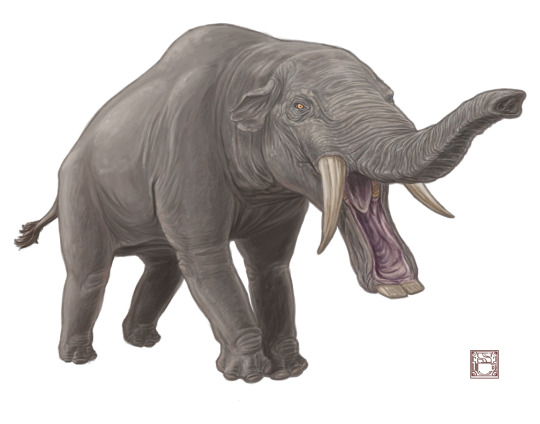
Final for Platybelodon grangeri.
P. grangeri was an extinct member of the Proboscidea order that lived during the Miocene Epoch, 15 to 10 million years ago; they were a prehistoric relative to modern day elephants. Members of their genus have been found in across parts of Africa, Asia, and the Caucasus.
Their distinctive lower teeth were once thought to have been used like shovels, allowing the animal to scoop large amounts of aquatic plants into it's mouth, but recent analysis of microscopic damage shows patterns closer to those of animals that use their teeth to strip bark from trees or cut tougher terrestrial plants. It's thought they used their trunks to hold such plants in place while using their teeth as a kind of built in scythe.
#platybelodon#proboscidea#elephant#paleo#paleoart#paleontology#sciart#science#naturalhistory#educational#prehistoric#miocene#mammal#digitalart#digitalillustration#illustration#illustrationartist#art#maineartist#artistsontumblr
68 notes
·
View notes
Text
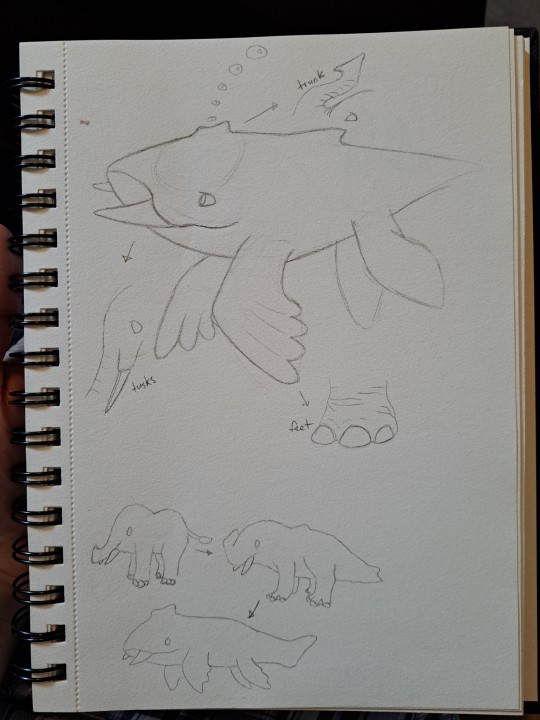
What elephants could be.
18 notes
·
View notes
Text
Strange Symmetries #22: The Whalerus And The Twisted Tusks
Mammalian tusks usually grow in symmetrical pairs with only minor developmental asymmetry, but a few species have evolved much more uneven arrangements.

Odobenocetops peruvianus was a small toothed whale that lived during the Miocene, about 7-3 million years ago, in shallow coastal waters around what is now Peru. Around 3m long (~10'), it was a highly unusual cetacean with binocular vision, a vestigial melon, muscular lips, and a pair of tusks – features convergent with walruses that suggest it had a similar lifestyle suction-feeding on seafloor molluscs and crustaceans.
In males the right tusk was much more elongated than the left, measuring around 50cm long (~1'8") in this species and up to 1.35m (4'5") in the closely related Odobenocetops leptodon. Since these teeth were quite fragile they probably weren't used for any sort of combat, and they may have instead served more of a visual display function.
And despite being closer related to modern narwhals and belugas than to other toothed whales, Odobenocetops' long right-sided asymmetric tusks actually seem to have evolved completely independently from the iconic left-sided asymmetric spiral tusks of narwhals.
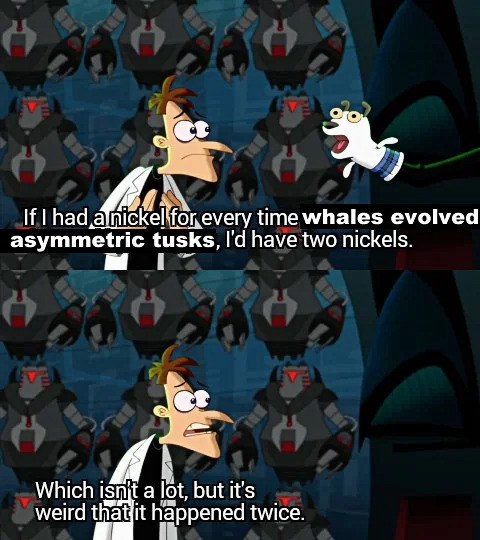
———

The woolly mammoth (Mammuthus primigenius) lived across Eurasia and North America during the last ice age, mostly from the Pleistocene about 400,000 years ago to the early Holocene about 10,000 years ago – altohugh a few relict populations survived until around 4,000 years ago in isolated areas of Alaska, Siberia, and eastern Russia.
Around 3m tall at the shoulder (~10ft), these hairy proboscideans had very long curving tusks that were used for digging out vegetation from under snow and ice, scraping bark from trees, and for fighting.
The tusks showed a lot of variation in their curvature, and were often rather asymmetrical, a condition also seen in the closely related Columbian mammoth. Like modern elephants mammoths may have also favored using one side over the other for certain tasks, which over their lifetimes could result in uneven wear exaggerating the natural asymmetry even more.
———
NixIllustration.com | Tumblr | Twitter | Patreon
#science illustration#strange symmetries#paleontology#paleoart#palaeoblr#tusks#odobenocetops#delphinoidea#odontoceti#toothed whale#cetacean#whale#artiodactyla#ungulate#marine mammal#woolly mammoth#mammuthus#elephant#proboscidea#afrotheria#mammal#art#whalerus#behold‚ a walrus!
346 notes
·
View notes
Text
Numidotherium koholense, aka the f****** animal ever.
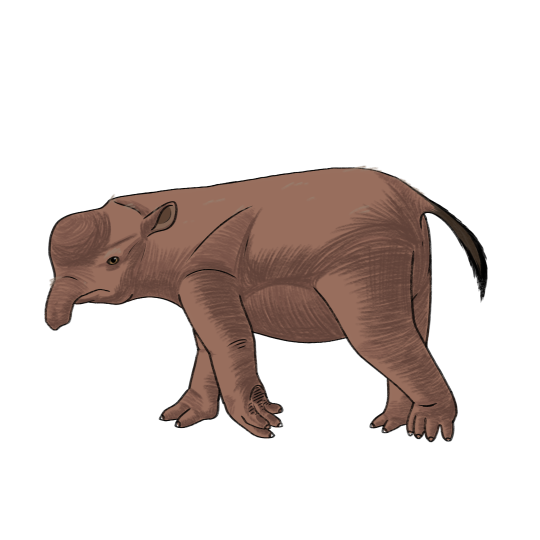
With Hatsune Miku for scale:

11 notes
·
View notes
Text

An African elephant (Loxodonta africana) crosses through the brush in Moremi National Park, Botswana
by jaffles
#african elephant#elephants#Loxodonta africana#loxodonta#elephantidae#proboscidea#mammalia#chordata#wildlife: africa#wildlife: south africa
49 notes
·
View notes
Text
"Wanderer"
2023

African Bush Elephant (Loxodonta africana)
#african bush elephant#african elephant#elephants#proboscidea#animals#animal art#wildlife#wildlife art#realism#photoshop#art#artists on tumblr#mexican artist#autistic artist#dartxo
2 notes
·
View notes
Text

Amebelodon
Amebelodon — рід вимерлих хоботних, що належать до родини Амебелодонтових (Amebelodontidae), або так званих лопатозубих. Найяскравішою ознакою цієї тварини є її нижні бивні, вузькі, витягнуті та чітко сплющені, причому ступінь сплющення у різних видів варіюється. В даний час до цього роду, який був ендеміком Північної Америки, відносять два достовірних види.
Повний текст на сайті "Вимерлий світ":
https://extinctworld.in.ua/amebelodon/
#amebelodon#north america#miocene#florida#proboscidea#amebelodontidae#usa#paleontology#paleoart#prehistoric#science#animals#digital art#extinct#animal art#fossils#illustration#sciart#ua#daily#creatures#палеоарт#палеонтологія#ukraine#ukrainian#art#україна#мова#українська мова#сша
7 notes
·
View notes